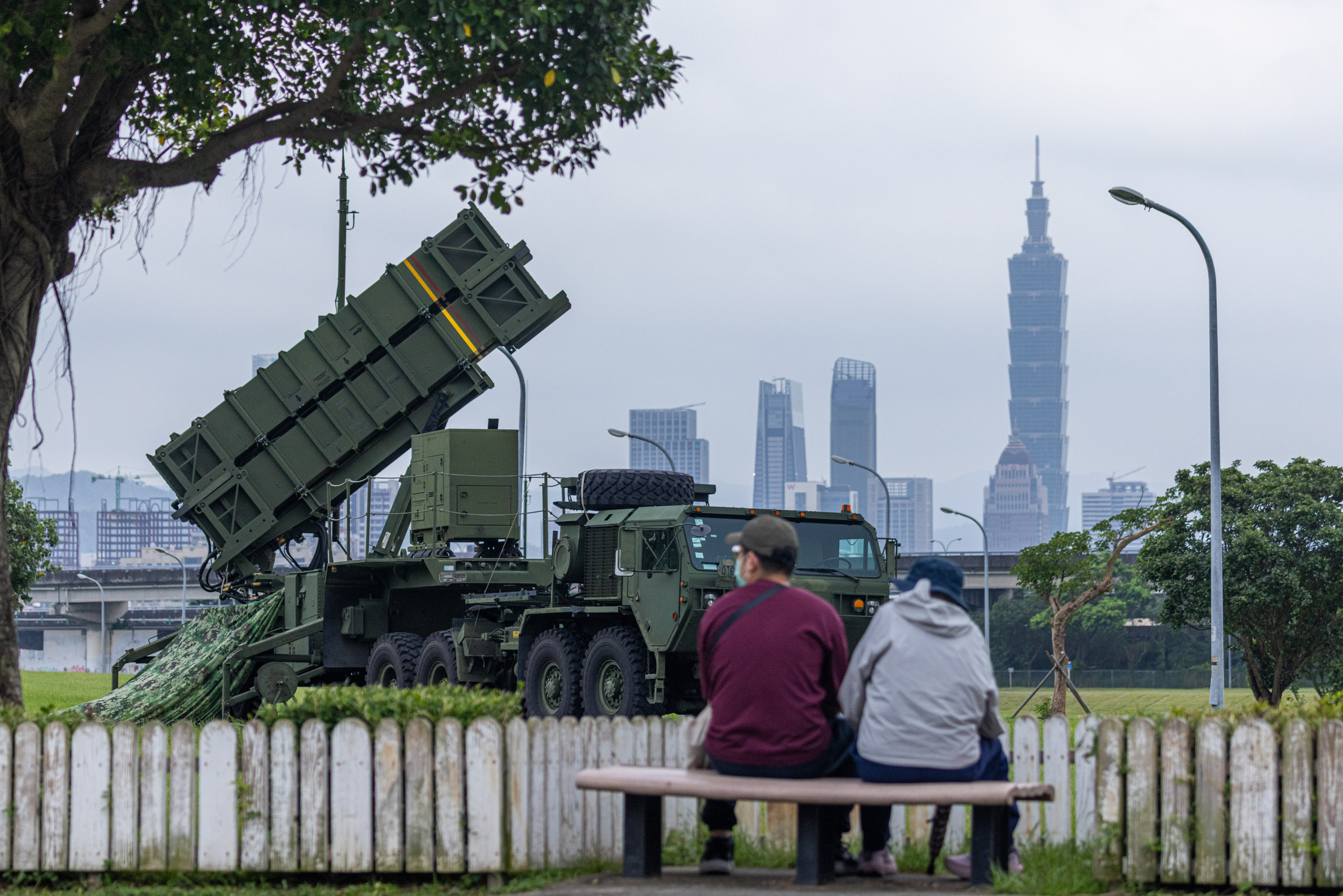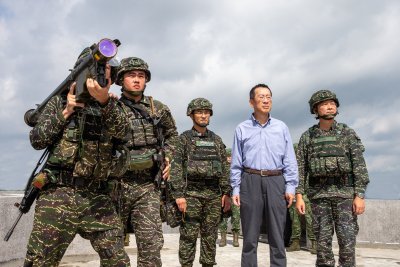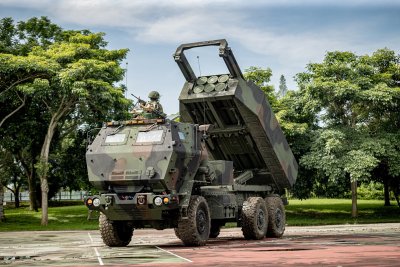
Photos showed Taiwan’s military training with several newly acquired U.S.-made defense systems over the weekend during the self-ruled island’s largest-scale annual military exercise, now in its seventh day.
The systems made an appearance in the densely packed Taipei metropolitan area as part of drills aimed at defending the capital against a potential invasion by China.
Why It Matters
The 41st Han Kuang exercise is taking place against a backdrop of heightened tensions with China, which claims Taiwan as its own and has vowed to unify with it—by force, if necessary. This year’s live-fire component is the longest ever, reflecting the seriousness with which Taipei views the threat.
The United States is the island’s primary arms supplier, though Washington has carefully maintained a policy of “strategic ambiguity” on whether it would come to the island’s defense.
Newsweek reached out to the Chinese Foreign Ministry and Taiwanese Defense Ministry via email for comment.
Annabelle Chih/Getty Images
What To Know
All three weapons systems were seen in public spaces, drawing the attention of onlookers.
Patriot missile systems were set up by Taiwan’s air force at a riverside park near Taipei Songshan Airport as part of a drill focused on protecting critical infrastructure from air attacks by China’s People’s Liberation Army, the Liberty Times reported.
The missile launchers can be loaded with four Patriot II or sixteen Patriot III missiles. Patriot II is specialized for intercepting enemy aircraft and cruise missiles, while Patriot III is designed for defense against ballistic missiles such as China’s Dong Feng 15.
Taiwanese troops were also seen across the city carrying U.S.-made man-portable Stinger missile launchers, as well as vehicle-mounted variants, in drills centered on strengthening low-altitude defense during a simulated amphibious landing.
1 of 2

Taiwan Ministry of National Defense

Taiwan Ministry of National Defense

Youth Daily News
On Saturday, a pair of armored trucks equipped with High Mobility Artillery Rocket Systems (HIMARS)—a precision-guided rocket artillery system primarily used for ground attack—were spotted in the central city of Taichung. HIMARS has demonstrated its effectiveness in Ukraine’s defense against Russian forces.
Military spokesperson Colonel Chen Lian-jia told the media that it would be critical to conceal the HIMARS from enemy satellites, aerial reconnaissance or even enemy operatives behind the lines until the systems are ready to fire.
While the U.S. has begun rolling out several major weapons platforms ordered by Taiwan, the Washington, D.C.-based Cato Institute estimated that $20 billion in backlogged orders remained as of the end of last year.
What People Are Saying
The Taiwanese Defense Ministry, on X, formerly Twitter, on Sunday: “[Defense] minister Wellington Koo inspected the deployment of Republic of China Air Force PAC-2/3 [Patriot Advanced Capability-2 and -3] air defense systems, and the Republic of China Marine Corps air defense exercise.
“Troops swiftly completed engagement procedures, defending airspace with twin-launcher and man-portable Stinger missile systems.”
Jiang Bin, spokesperson for the Chinese Defense Ministry, told reporters last week: “The DPP [Taiwan’s ruling Democratic Progressive Party] authorities are harming Taiwan out of selfish interests […]
“We solemnly warn the DPP authorities that seeking ‘independence’ by force is a dead end.”
What Happens Next
U.S. officials, including former Indo-Pacific Command chief Admiral Philip Davidson, have said they believe Chinese President Xi Jinping has ordered his military to be capable of moving against Taiwan by 2027, though they acknowledged this does not necessarily mean he will give the order on that date.
Trump administration officials have said Washington is committed to strengthening Taiwan’s “hard deterrence” capabilities, but it remains to be seen whether this will translate into expedited deliveries.
